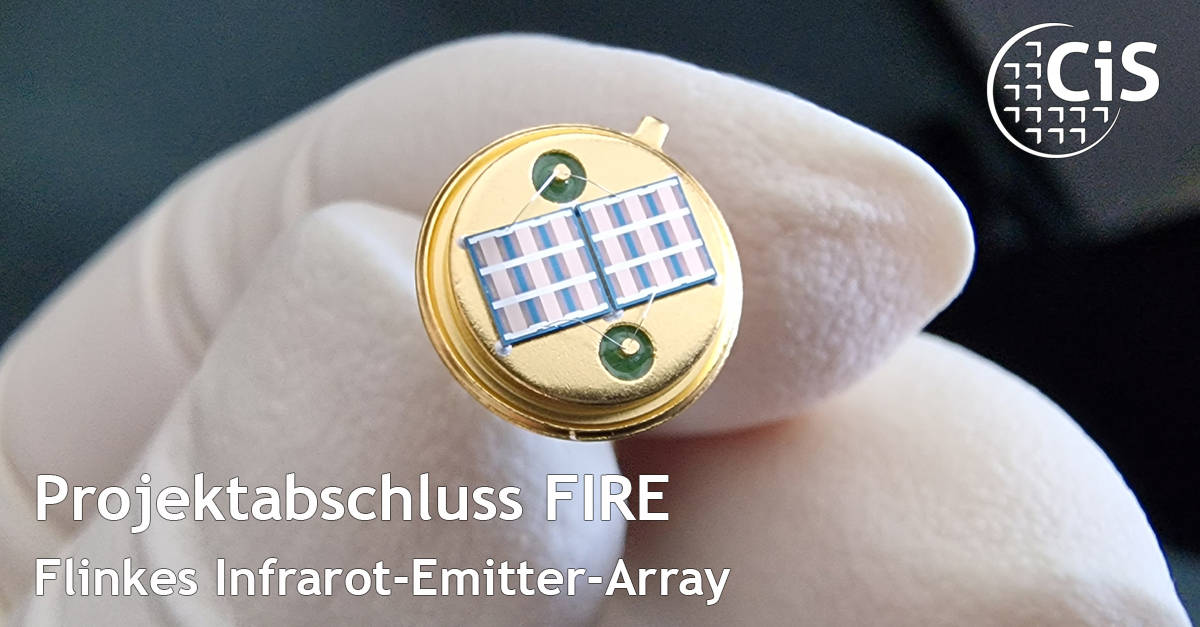Some gas sensor applications require high temporal resolution. These include, for example, some medical applications (breath gases) as well as industrial applications. For robust data acquisition and evaluation, NDIR sensors are operated in a modulated manner — i.e., in a constant alternation between on and off states, which is achieved by controlling the light source. However, due to their thermal mass, the emitters developed to date were limited in their dynamics to approx. 30 Hz or, in the case of very small components, delivered insufficient optical power.
Against this background, the “FIRE – Fast Infrared Emitter” project was carried out with the aim of being able to address applications at 100 Hz with sufficient optical power. The central idea was to integrate several small and therefore fast active areas into a single chip. This was first tested through the hybrid integration of individual, very small (1×1 mm²) chips and then transferred to variants of monolithically integrated arrays. Model-based designs and the necessary manufacturing processes were developed and implemented.
In the FIRE project, thermal IR emitters with high dynamics (100 Hz) and simultaneously high optical power were developed as broadband IR light sources for measuring gas concentrations with a high sampling rate, for example for analyzing respiratory gases.
The demonstrators achieve the targeted technical parameters and have already been successfully tested in initial medical applications. The plan now is to transfer this solution into series production.
 The research and development work described was funded by the Federal Ministry for Economic Affairs and Energy (BMWE) as part of the “Fast Infrared Emitter Array” (FIRE) research project.
The research and development work described was funded by the Federal Ministry for Economic Affairs and Energy (BMWE) as part of the “Fast Infrared Emitter Array” (FIRE) research project.
Funding code: 49MF220020




